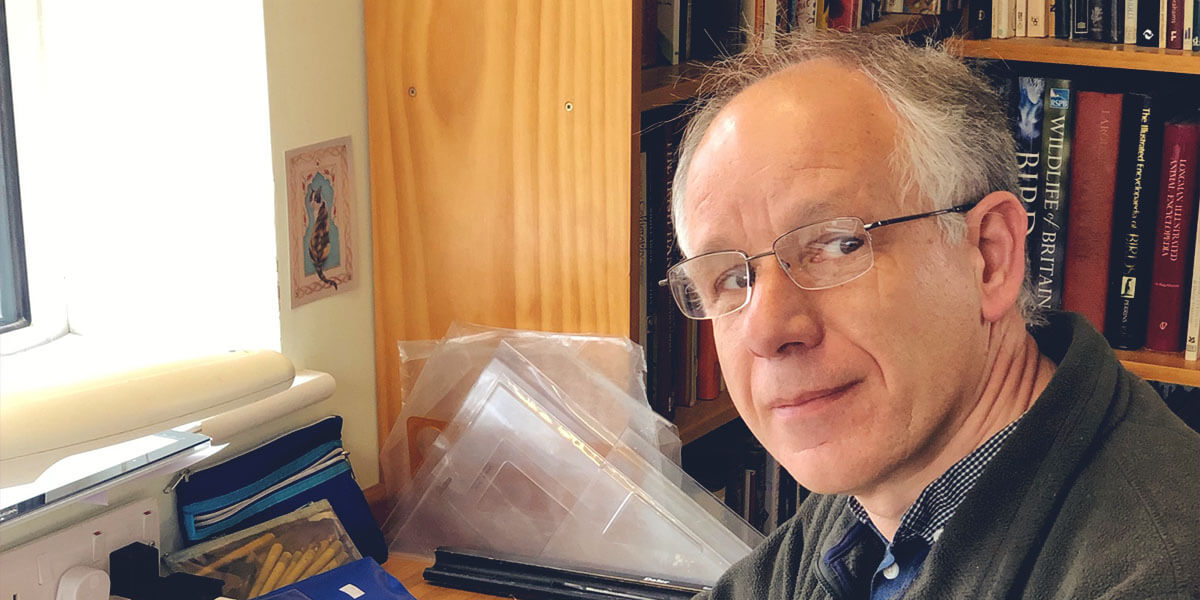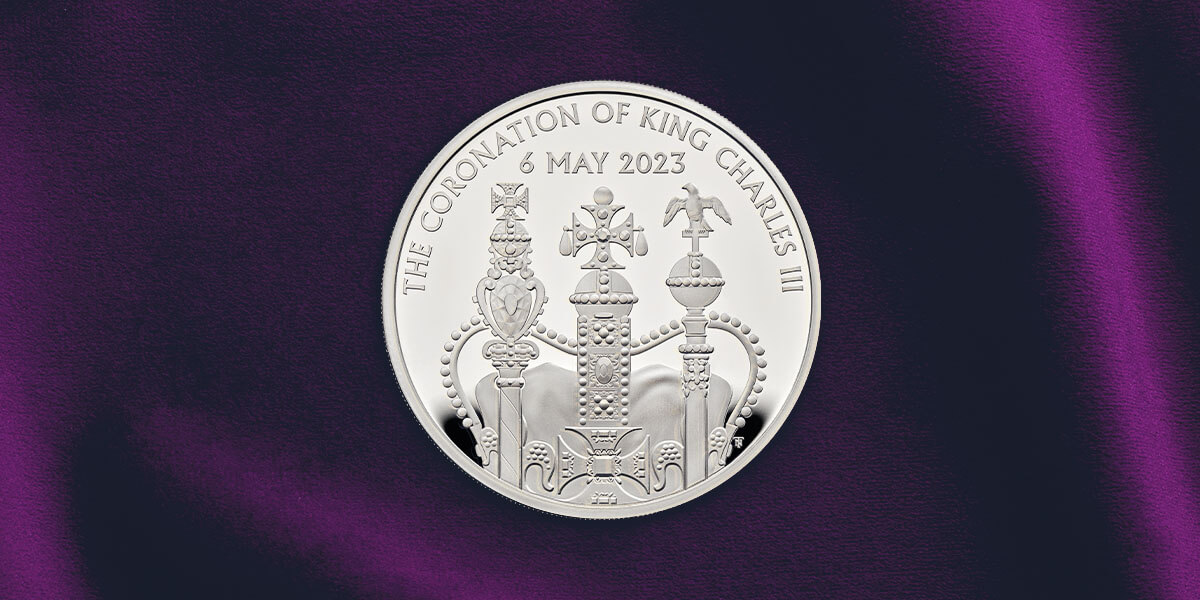Meet the Maker: Timothy Noad
To commemorate the coronation of His Majesty King Charles III, we are releasing a collection of coins, featuring three new reverse designs, and a Coronation Sovereign.
A heraldic designer who has a prolific portfolio when it comes to creating designs for coins and medals, Timothy Noad has designed the reverse of the £5 ‘crown’ in the collection. No stranger to creating celebratory, royal designs, his designs were previously selected for medals commemorating Her Late Majesty Queen Elizabeth II’s Golden, Diamond and Platinum Jubilees, as well as three designs, in 2002, 2005 and 2022, for rare changes to the reverse of The Sovereign.
We sat down with the designer to discuss his creative process and the inspiration behind his design for the £5 coin in The Coronation of His Majesty King Charles III UK Coin Collection.

After receiving the submission invite, what were you most looking forward to about this project?
“Royal commissions are always special, this one in particular because it relates to the new king and his coronation, perhaps the most important occasion of all. Royal symbols appear on a lot of British coins, so it is always an exciting challenge to find new ways of representing them.”
How did it feel when you found out that your design had been chosen to feature on the coin?
“I was delighted and very honoured to be chosen. I know how important crown coins celebrating royal occasions are for all kinds of collectors. For most of us, this will be the first coronation we will ever see. As I created many designs for coins and medals during the reign of Queen Elizabeth II, it is thrilling to have my design used for this highly significant occasion in the reign of the new King Charles III.
“I remember being given a Silver Jubilee Crown when I was at primary school in 1977 and this led to an interest in collecting coins, including The Queen’s Coronation Crown coin of 1953. I had no idea that I would be creating the next one!”
Do you have any personal connections to the subject matter?
“I have worked as a heraldic artist at HM College of Arms for 36 years so often portray royal symbols and regalia in my work. Personally, I am fascinated by royal history and pageantry. There is also a local connection. The goldsmith who made the Crown Jewels for Charles II was Sir Robert Vyner, who lived here in Ickenham on the edge of London, where I have also lived for my whole life.”

How did you approach the initial design concept?
“I wanted to depict the crown and regalia in an original way. I looked at pictures of previous coronations and imagined zooming in on St Edward’s Crown at the moment it is placed on The King’s head and, seated on the throne, he will be holding the two sceptres in front of him on either side.
Did you undertake any research for the theme?
“I did a lot of research by looking at images of previous coronations and the Crown Jewels. It is very important for me to depict these things accurately but in a decorative way. Recently, I visited the Crown Jewels at the Tower of London, so I’m quite familiar with the design of the regalia.”
Could you talk us through any iterations that led you to the final design?
“I began by drawing thumbnail sketches until I arrived at ideas I wanted to pursue. I then enlarged them to work in more detail. I began to see interesting rhythms in the repeated shapes of the orbs and crosses and all the pearls and jewels.
“It was important for me to get the relative scale and placing correct for each item. Working with The Royal Mint, I was careful to ensure that these were all rendered accurately on the actual coin. I was also incorporating dates and inscriptions which had to work within the spaces around the regalia.”
Were there any challenges you faced in creating the design?
“It’s always difficult to come up with an original approach to well-used images of royal symbols and regalia. I also found it challenging to get the complicated details on the Crown Jewels correct, knowing that they had to work well on a tiny scale. For me, spaces are just as important as images, so I try to get each item to read clearly within its space and to work well with the inscriptions.”
What was your journey to becoming a designer?
“I trained at Reigate School of Art in calligraphy, heraldry and illumination. As part of the course, I designed and made a bronze coin for a competition run by the Royal Society of Arts. I was first invited to submit designs for coins and medals about ten years later in the late 1990s, as part of my work as a heraldic artist at the College of Arms.”
Which artists or art movements inspire you?
“I am inspired by the numismatic artists Henry Kruger Gray and William Gardner, who made wonderful heraldic designs in the twentieth century. I like many branches of art, from medieval manuscripts to Dutch still-life pieces and on to the Pre-Raphaelites. I am also inspired by the artist-designers of the mid twentieth century, like Eric Ravilious and Edward Bawden.”
Is there a coin that you would love to design in the future?
“I am happy to design any coin that is offered to me!”



